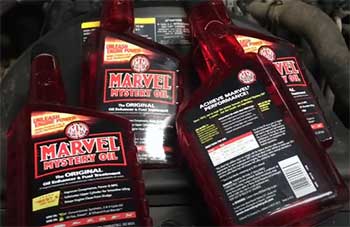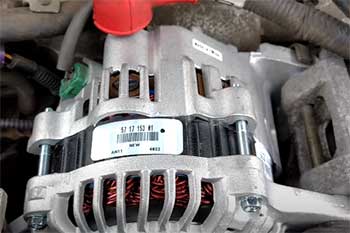I’m excited to share my personal experience with the Peak Optix Plus wiper blades—a product I believe you should consider for your vehicle. From exceptional durability to all-weather performance, these blades have made a noticeable difference in my driving experience.
In this review, I share my firsthand insights, weighing their pros and cons, offering maintenance tips, and comparing them with other brands to help you make an informed choice. If you value clear vision and reliable performance in every season, I think you’ll appreciate what these wiper blades bring to your car.
Quality of Peak Optix Plus Wiper Blades
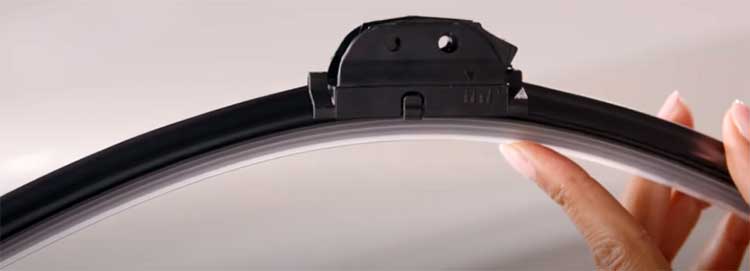
Let me tell you about the design and build quality of these wiper blades because it truly sets them apart from many other options I’ve tried. The first thing that struck me was the sleek yet robust construction.
The blades are crafted to hug the windshield’s contour, which means that even on curved surfaces, every inch of the blade maintains consistent contact. This feature is critical for ensuring that no water or debris escapes during a downpour or a snowy storm.
The beam blade technology is one of the star features. Unlike traditional frameworks that can be prone to uneven pressure distribution, the beam design of the Peak Optix Plus ensures that pressure is applied uniformly along the entire blade.
This not only enhances performance but also contributes to the longevity of the blades. I found that this design minimizes streaking and leaves my windshield spotless, even when conditions are less than ideal.
Another design element that I found noteworthy is the heavy-duty spoiler. In my experience, when you’re driving through high winds or dealing with turbulent weather, maintaining firm contact with the windshield is essential.
The spoiler on these blades creates additional downforce, which means that even at high speeds or during heavy rain, the blades stay firmly in place without skipping or chatter. This is something that I have struggled with in the past using cheaper alternatives.
The materials used in the Peak Optix Plus are top-notch as well. They’re built to withstand not just the physical wear and tear of daily driving but also the more extreme conditions like snow, sleet, and heavy rain.
I’ve noticed that these blades don’t crack or deform even after months of exposure to the elements—a testament to their durability. While many lower-cost wiper blades seem to degrade rather quickly, these have proven to be a solid investment for long-term use.
I also appreciate the attention to detail in the overall construction. The EZ-Snap Universal Connector System is another design feature that impressed me. It’s user-friendly and fits most common wiper arms, making the installation process straightforward.
Even though I encountered a minor learning curve with the attachment mechanism, the overall ease of installation and the secure fit made up for it. This design consideration shows that the manufacturers have taken real-world usage into account, ensuring that the product isn’t just innovative on paper but practical in everyday scenarios.
Installation And Setup Experience of Peak Optix Plus wiper blades
Installing the Peak Optix Plus wiper blades was a relatively smooth process for me, even though I had a few initial challenges.
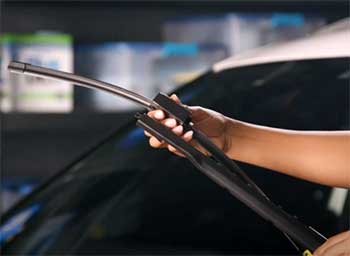
I’m not an automotive expert by any means, so when I first handled the EZ-Snap Universal Connector System, I was curious to see if it would really be as hassle-free as advertised.
I can honestly say that after a bit of trial and error, I had them securely in place and working like a charm.
At the beginning, I did find the attachment mechanism slightly confusing.
The connector system has a unique design that requires a bit of adjustment to align properly with your car’s wiper arm.
However, if you’re comfortable with a bit of tinkering or have a knack for following simple instructions, you’ll manage just fine. I spent about ten minutes figuring out the correct positioning, and once it clicked, the rest of the installation was a breeze.
What I appreciated most about the installation was the universal fit. The EZ-Snap system is designed to work with most common wiper arms, which meant that I didn’t have to worry about compatibility issues.
I’ve seen other products where you have to purchase additional adapters or make modifications, so this plug-and-play feature was a refreshing change. The simplicity of this system makes it accessible for anyone, regardless of their level of technical expertise.
I also took note of the physical appearance after installation. Some users have mentioned an aesthetic issue—a small hump at the attachment point that is visible when the wiper is attached. I did notice this minor imperfection, but I didn’t let it affect the overall performance.
While the hump may not appeal to everyone, I found that it’s a small trade-off considering the enhanced functionality and durability of the blade. In my view, a slight aesthetic compromise is acceptable when it comes to achieving better performance and longevity.
After installing the blades, I took my car out in various weather conditions to test their effectiveness. The fact that I didn’t need to adjust them repeatedly or worry about the connection coming loose was a major relief.
The secure fit provided by the EZ-Snap system instilled confidence in me, especially when driving in high-speed conditions or during unexpected weather changes. Overall, the installation experience was positive, and I would encourage you to give it a try—even if you’re not the most mechanically inclined.
Performance In Different Weather Conditions
One of the most important aspects for me when evaluating windshield wiper blades is their performance across different weather conditions.
With the Peak Optix Plus wiper blades, I’ve been thoroughly impressed by how well they handle everything from light drizzles to heavy downpours, and even during wintry conditions.
- Rainy Days
During rainy days, my primary concern is always clear visibility. I’ve driven through some pretty heavy storms, and I found that these blades consistently wiped away water without leaving streaks or smudges on the windshield.
The beam blade technology plays a key role here. By ensuring that pressure is evenly distributed, the blades manage to keep a firm grip on the glass, even when the rain intensity increases.
I remember one particular downpour where other blades on my fleet of vehicles struggled with skipping, but the Peak Optix Plus delivered a smooth and steady performance throughout.
Moreover, I noticed that the blades responded well to the fast accumulation of water. Even when the windshield was suddenly pelted by rain, there was no lag in the wiping action.
This immediate response is crucial for safety, especially when visibility is compromised by heavy rain. I felt a sense of reassurance knowing that the blades were up to the task, providing a clean view without any distracting streaks or splatters.
- Snowy and Icy Conditions
I’ve also tested these wiper blades in snowy and icy conditions. Many wiper blades tend to clog up or freeze, but the design of the Peak Optix Plus seems to be optimized for cold weather. The heavy-duty spoiler design ensures that the blade maintains contact with the windshield even when there’s a layer of ice or snow.
I did experience a few instances where I had to clear off some ice manually before the blades could perform at their best, but once the ice was removed, the performance was on par with what I experienced on rainy days.
In winter conditions, maintaining a consistent wipe is challenging. The blades must be resilient enough to handle the friction and pressure changes caused by frozen surfaces. I was pleased to see that these blades did not warp or lose their shape after repeated use in the cold.
The durability promised by the manufacturers was evident as they continued to perform reliably, even after exposure to harsh winter weather. This gives me the confidence to rely on them year-round, regardless of the seasonal changes.
- Dry and Sunny Conditions
You might wonder how wiper blades perform on days when the weather is dry and sunny. While these conditions don’t demand the same level of performance as rain or snow, they can still wear down the rubber components over time.
I found that the Peak Optix Plus blades hold up well even in dry conditions. Their build quality helps prevent premature cracking—a common problem with lower-quality wipers that are left exposed to constant UV rays and heat.
Although it’s common for all wiper blades to show some signs of wear after a long period of use, these blades seem to stand the test of time better than many competitors I’ve tried.
In summary, regardless of whether you’re dealing with torrential rain, light drizzles, snow, or even prolonged dry spells, these wiper blades maintain excellent performance.
I appreciate that the Peak Optix Plus doesn’t just shine in one particular condition; instead, it delivers consistently reliable results across the board. This versatility makes them a smart choice for anyone who wants a dependable solution for all seasons.
Pros And Cons of Peak Optix Plus Wiper Blades
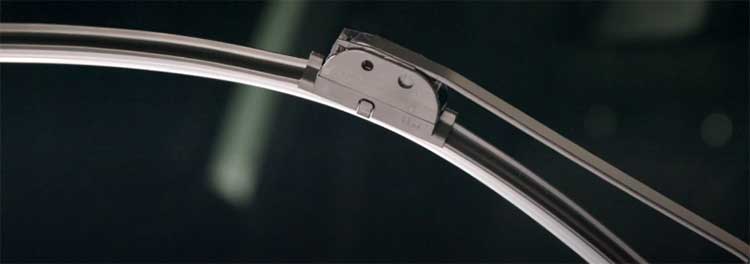
No product is without its strengths and weaknesses, and I’ve come to appreciate that the Peak Optix Plus wiper blades are no exception. Here are the key pros and cons based on my personal experience:
Pros
- Exceptional Durability: The blades are built to last, offering twice the durability of many standard options. I noticed that even after months of varied weather exposure, there was minimal degradation in performance.
- All-Weather Performance: Whether it’s raining, snowing, or just a dusty sunny day, these blades deliver consistently clean results. Their design ensures that every inch of the windshield is addressed.
- Beam Blade Technology: The even distribution of pressure ensures that the blades hug the windshield properly, reducing streaking and missed spots.
- Heavy-Duty Spoiler Design: This feature adds extra downforce, which is especially useful during high-speed driving or in windy conditions.
- User-Friendly Installation: Despite a minor learning curve with the attachment system, the EZ-Snap Universal Connector System makes installation relatively straightforward.
- Universal Fit: The blades are designed to be compatible with most wiper arms, eliminating the need for additional adapters.
Cons
- Minor Aesthetic Issue: I did notice a small hump at the attachment point. While this doesn’t affect performance, it is a visual imperfection that might bother those who value a completely streamlined look.
- Initial Installation Hiccups: For the less mechanically inclined, figuring out the connector system might take a few extra minutes. However, this is a minor issue once you get the hang of it.
- Potential for Confusion: If you’re used to a simpler design, the modern features and multiple attachment points might seem over-engineered at first glance.
- Dry Weather Wear: Although the blades perform well overall, constant exposure to dry and hot conditions can eventually lead to wear. Routine maintenance can help mitigate this issue.
In weighing these pros and cons, I’ve come to see that the strengths far outweigh the minor drawbacks. The slight aesthetic imperfection and the brief learning curve during installation are small trade-offs for the superior performance and durability that these blades offer.
Maintenance Tips For Peak Optix Plus Wiper Blades
To get the most out of your Peak Optix Plus wiper blades, I’ve found that a bit of routine maintenance goes a long way. Here are some practical tips from my own experience to help you maintain your blades and extend their lifespan:
- Regular Cleaning: I make it a habit to clean my wiper blades at least once a month, especially if you live in an area with a lot of dust or pollution. Use a soft cloth dampened with a mixture of mild soap and water. Gently wipe the rubber edge and the metal framework to remove any dirt, grime, or residues that might affect performance. Cleaning not only improves the quality of the wipe but also helps prevent the buildup of debris that can lead to premature wear.
- Avoid Harsh Chemicals: It’s important to steer clear of abrasive cleaners or harsh chemicals when cleaning your blades. These substances can degrade the rubber over time, reducing the effectiveness of the wipe. I prefer using gentle solutions that are specifically designed for automotive maintenance. This approach ensures that the integrity of the rubber is maintained, keeping the blades in top condition for longer.
- Inspect Regularly: Make it a point to inspect your wiper blades periodically, especially before the onset of extreme weather conditions. Look for signs of wear, such as cracks, tears, or loss of flexibility. If you notice any of these issues, it might be time to clean them thoroughly or consider a replacement. Regular inspections have helped me catch minor issues early on, preventing any unexpected problems during heavy rain or snow.
- Protect Against UV Exposure: Since the blades are exposed to constant sunlight when not in use, I recommend parking in shaded areas whenever possible. Prolonged exposure to UV rays can cause the rubber to degrade faster. If you don’t have the option to park in the shade, consider using a windshield cover or a UV-protective spray designed for automotive rubber parts.
- Timely Replacement: Even with proper maintenance, no wiper blade lasts forever. I’ve learned from personal experience that replacing your blades at least once a year—or more frequently if you drive in harsh conditions—ensures that you always have optimal performance. The Peak Optix Plus blades are built to be durable, but periodic replacements are essential for maintaining safety and effectiveness.
- Follow the Manufacturer’s Instructions: Lastly, I always keep the manufacturer’s instructions handy. They provide specific guidelines on installation, cleaning, and replacement intervals that are tailored to the design and materials used in the Peak Optix Plus blades. Following these guidelines has helped me avoid common pitfalls and get the most out of this product.
By incorporating these maintenance tips into your routine, you can enjoy the reliable performance of your wiper blades throughout the year. Trust me, a little extra care now will save you from unexpected issues down the road.
Comparison With Other Wiper Blade Brands
Over the years, I’ve experimented with a variety of wiper blades—from the most budget-friendly options to more premium brands. In comparing these to the Peak Optix Plus, several key differences have emerged that I think are worth highlighting.
- Peak Optix Plus Vs. TRICO Windshield Wipers
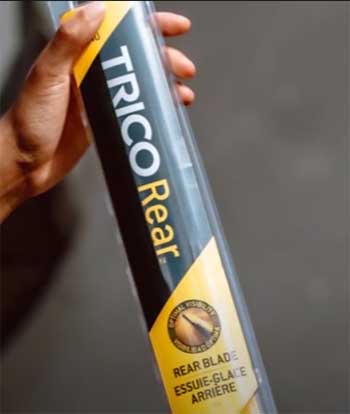
When I compared the Peak Optix Plus to TRICO Windshield Wipers, a few key differences immediately stood out.
Both brands have solid reputations for reliability, but the Peak Optix Plus takes the edge with its innovative design.
The TRICO blades, while dependable, rely on a more conventional frame that sometimes struggles with uneven pressure distribution.
In contrast, the beam blade technology on the Peak Optix Plus ensures a uniform contact with the windshield.
I also found the EZ-Snap Universal Connector System to be a major plus—making installation a straightforward process.
Although TRICO offers great performance in moderate conditions, I noticed that the Peak Optix Plus maintained a cleaner wipe during heavy rain and gusty winds, thanks to its heavy-duty spoiler design. For me, the modern features of the Peak Optix Plus simply provided that extra level of confidence on the road.
- Peak Optix Plus Vs. Simoniz Wiper Blades
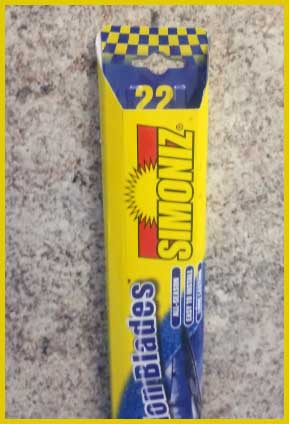
Comparing the Peak Optix Plus with Simoniz Wiper Blades was an interesting exercise in balancing performance with practicality.
Simoniz blades are known for being cost-effective and performing adequately in light to moderate weather.
However, during my experience in more extreme conditions, the Peak Optix Plus really shined.
The advanced beam blade technology allowed for consistent pressure along the entire blade, which was especially noticeable during intense downpours.
Additionally, the installation process with the Peak Optix Plus was impressively user-friendly, thanks to its universal connector system—a feature that can be a bit more cumbersome with Simoniz products.
While Simoniz does offer a reliable option for everyday use, the enhanced durability and performance of the Peak Optix Plus make it a standout choice when you’re looking for dependable, all-weather performance.
- Peak Optix Plus Vs. Michelin Guardian Wiper Blades
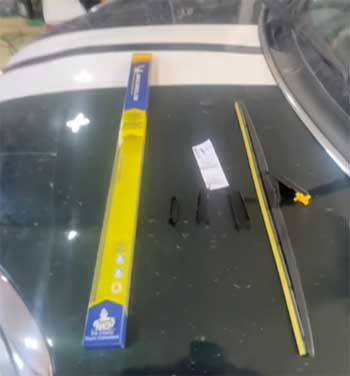
In my experience, comparing the Peak Optix Plus to Michelin Guardian Wiper Blades revealed strengths on both sides, but with distinct differences that matter depending on your needs.
Michelin Guardian blades are often praised for their premium materials and quiet, long-lasting performance.
They excel in providing a smooth operation and are well-regarded for handling extreme conditions. However, the Peak Optix Plus competes admirably at a more accessible price point.
I was particularly impressed by the Peak Optix Plus’s heavy-duty spoiler and beam blade design, which ensured a consistent and streak-free wipe even at high speeds.
While Michelin offers a refined product, I appreciated how the Peak Optix Plus balanced top-tier performance with ease of installation.
Its EZ-Snap connector system meant I could quickly swap them out without fuss—a convenience that, in my view, tips the scales in its favor for those who value both efficiency and performance.
Frequently Asked Questions (FAQ)
In my experience, spending a bit more on wiper blades can indeed make a difference. Premium options like the Peak Optix Plus offer superior design features—such as beam blade technology and a heavy-duty spoiler—that lead to better performance, especially in extreme weather. While you can find cheaper alternatives, the long-term benefits of durability and reliability are often worth the extra investment.
The Peak Optix Plus wiper blades are 26 inches long, designed to provide comprehensive coverage and excellent performance on most windshields. Their size and design ensure that every part of the windshield is effectively wiped for a clear view, regardless of the weather conditions.
In my personal experience, effectiveness comes down to consistent contact with the windshield and even pressure distribution. The Peak Optix Plus, with its beam blade technology and heavy-duty spoiler, is among the most effective options I’ve used. They excel in maintaining a clean windshield in various weather conditions, which is what I look for in an effective wiper blade.
I’ve tried both silicone and rubber blades over the years. Silicone blades tend to offer longer life and better performance in extreme temperatures, while high-quality rubber blades, like those used in the Peak Optix Plus, provide excellent overall performance at a competitive price. Ultimately, the best choice depends on your specific driving conditions and personal preferences, but in my experience, well-designed rubber blades can perform just as effectively as silicone options if maintained properly.
Wrapping Up
I genuinely believe that the Peak Optix Plus wiper blades are a smart choice for anyone looking to enhance their driving safety and comfort. They deliver reliable performance across all weather conditions with innovative technology that ensures durability and clear visibility.
If you value consistent performance and ease of installation, I highly recommend giving these wiper blades a try. Upgrade your driving experience by investing in a product that truly makes a difference.
